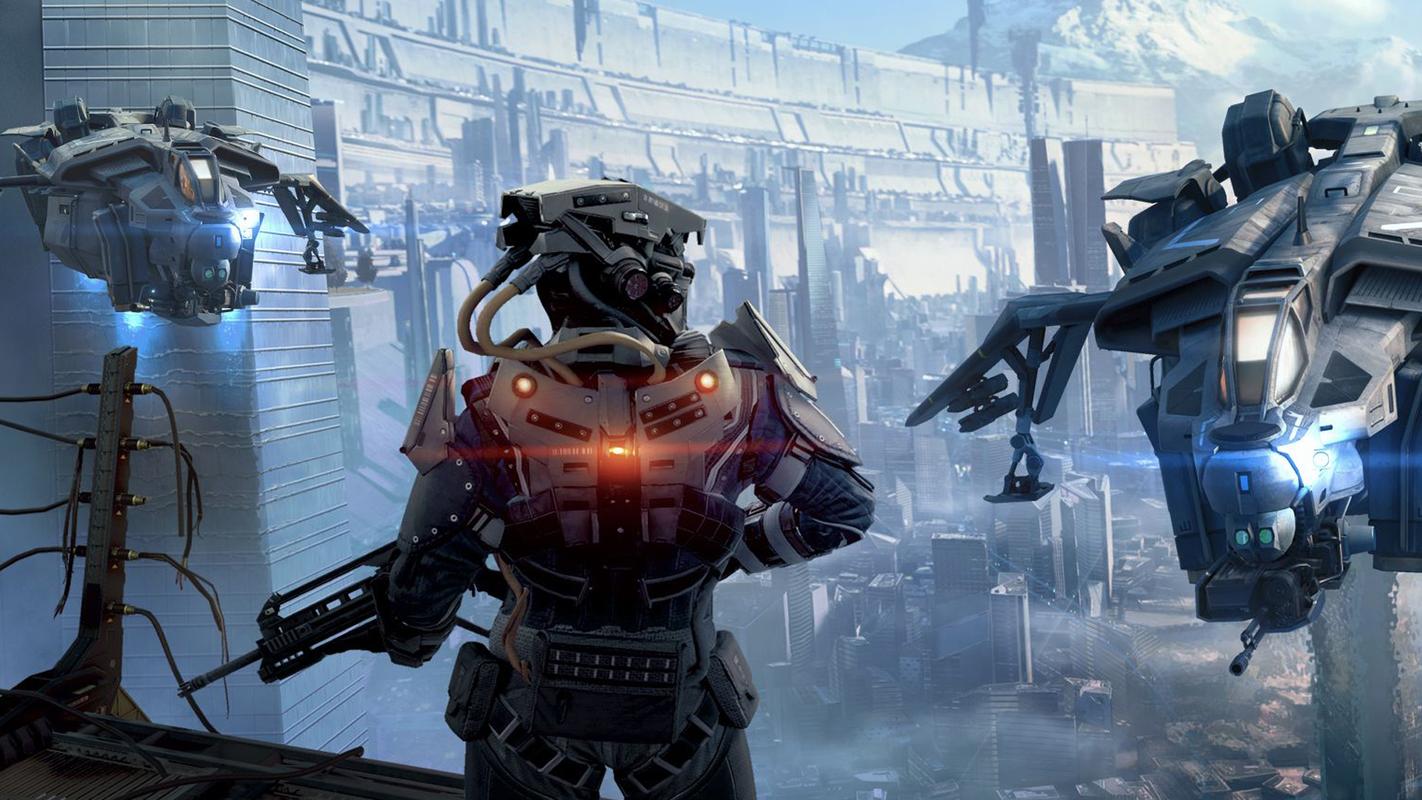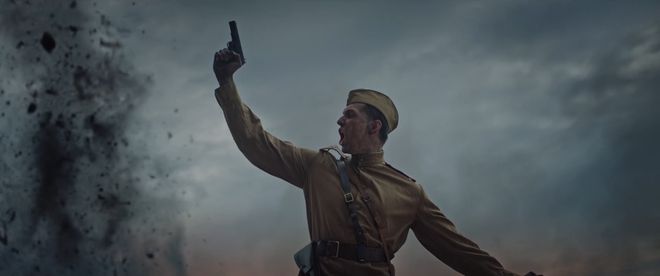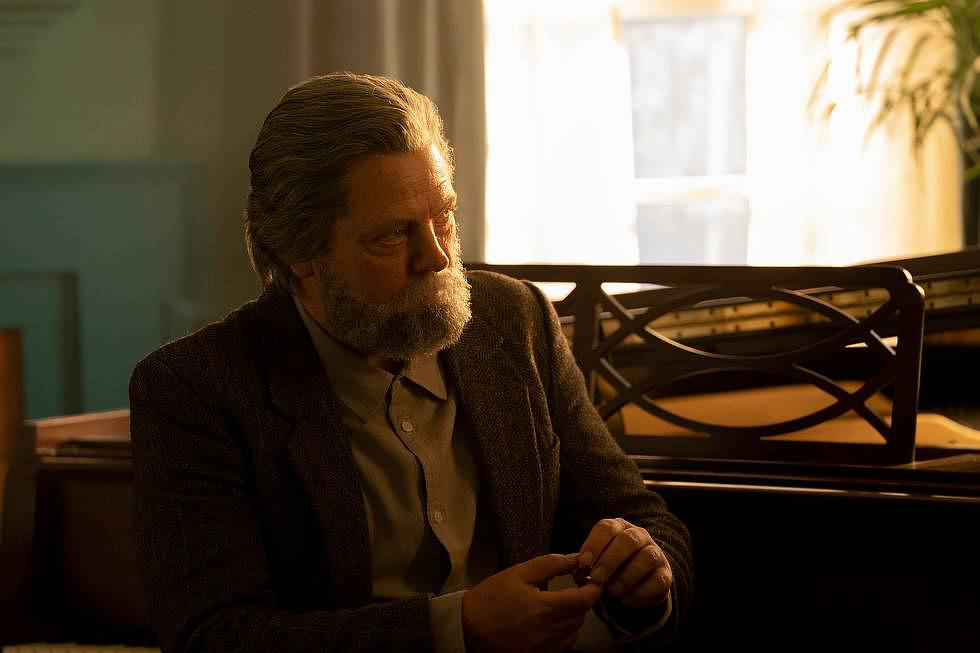Diablo 4 from a sneak preview: excellent stitching enough to renew

The news that “Diablo 4 will be released on June 6th this year” is a little too normal, too much news for a normal game company to be concerned about. It’s certainly important to note that Diablo 3, which as far as I can remember is still a bit radical in its changes and seems like some kind of new attempt, is surprisingly 11 years old. Gamers around the world have been waiting for some new stuff.
Yesterday, the Diablo 4 pre-launch beta (March 18-20), which allowed pre-order players to play, ended, and the next 25-27 will open up the open beta for all players to come in and play – if you’re still on the fence about buying the game, the open beta is certainly not to be missed. I played for nearly 20 hours this past weekend, and I’ve basically experienced everything that’s open so far, including the level cap of 25, the first chapter of the game, the crafting and upgrade system, the word washing and reshaping of equipment, the illusion system, and the world bosses, and in this article I’ll share those experiences and give a brief review of the game.
It’s important to note that the review mentioned here is not only for the beta content, but more of a description and analysis of the current generation of the game as seen from the beta. It is true that it is often difficult to evaluate a game based on a beta or demo, but Diablo is a very predictable genre, and in my opinion the features shown in the beta can already give a good guess of the full experience of the game. So I’ll also talk about what has changed and what has stayed the same from a genre perspective.
To sum it up in one sentence, Diablo 4 is still a game that I would brush up on for hundreds of hours. At first glance, it seems like a complete return to Diablo 2, but a closer play reveals that it actually “stitches together” (not in a derogatory sense) a lot of elements: elements from both 2nd and 3rd generation of the series are present, needless to say, and it also incorporates the mechanics of MMORPGs (especially Guild Wars 2), Ubisoft-style checklist style open world. The subtle blend of elements, while still maintaining the core experience, makes for a good overall experience that is both familiar and a little bit new – not as new as the “crushed Oreos in ice cream” idea, perhaps, but at least “drizzling ice cream with jam”.
If I were to compare, I prefer this new game to both the original Diablo 3 and the Soul Calibur version of Diablo 3. Mechanically, it has a higher ceiling in terms of playability than Gen 3 and is more adapted to today’s era than Gen 2. That said, I’m also sure that it doesn’t give me the wow factor that Diablo 2 did – its achievements are more about keeping the ball rolling and less about pioneering.
More of a return to Gen 2 than Gen 3?
At first glance, the game has “changed for the better” written all over it. Many gamers thought Diablo 3 was too bright, even “cartoony”, and Gen 4 seems to draw a line under that. The general tone of Diablo 4 is subdued and the art style is much closer to that of the 2nd generation, if I had to describe it, it would probably be a cold, grey, sharp feeling.
There were times when this change in style felt like overkill to me. The opening CG contains a number of almost B-movie sequences, as do the game scenes. Also, the overall tone seems too dark, to the point where playing with the lights on makes it difficult to see some of the details of the scenes (yes, playing with the lights off is highly recommended if you care about the best film and television experience). All in all, the tone has a particularly deliberate “we’re for grown-ups!” feel to it. “.
In the game, both the little sinkers coming at you and the teleportation array reminded me a lot of Generation 2 – many details I’d forgotten, but it’s amazing to see, and maybe there’s a colour tone to it!
It’s not just the graphics that are like Gen 2. One of the major “backwards changes” in Diablo 4 is the return of the skill tree.
As well as gaining skill points for upgrades, players can also earn additional skill points through map exploration and other means. However, unlike Diablo 2, which had 20 levels in each skill, the skill tree is not at all sufficient, as most active skills are now capped at 5, passive skills that gain certain attributes or effects are capped at 3, and active skills have only 1 level of additional effects. Combined with the fact that it is relatively easy to wash points, overall it is a fairly clear and easy to understand and well planned skill tree.
Players should only choose one of the basic skills and one of the core skills, while the other active skills are limited to the 4 they need, and any more points are used for the passive ones – there are only a few skill grids anyway, so it’s easy to choose skills!
Particularly like Gen 2 is the leveling system. The level cap has been raised to 100, with the peak level opening at level 50. This is more than just a numerical change and will likely change the pace of the game. Diablo 3 is particularly similar to World of Warcraft in terms of late leveling, where you only officially start the game once you reach full level. But unlike the earlier Diablo 2, which was more difficult to level up later in the game, reaching full level is not easy, and it would be too harsh to say that “full level is the start”.
This longer term build up makes for a different experience, as the later stages of the game are a gradual, longer cycle of build up, both in terms of leveling and painting. The rewards that come with leveling up, such as skill points, are also more appealing than a system like “peak leveling”. In contrast, the Diablo 3 experience is split into two distinct segments: the crap time before leveling up (if you already know the plot) and the time after leveling up when you barely care about the experience. It’s hard to say which of these two modes is better or worse, but the feeling is different.
Did you hire Ubisoft designers?
You know, the previous Diablo series was quite linear in terms of leveling. It was basically a “run main – pass – level up – run main again” process, with a few replicas at best, or even just replicas. There are not even many side quests, let alone map exploration. Now in just the first chapter, Diablo 4 serves up a large map with such a large amount of content.
It’s a great change, not that this list-of-lists style of open world is all that great, Lord.
After all, whether it’s the game’s CG or the real-time playthrough of the overworld, this is a big production that qualifies as a level online, and it’s not a loss if you don’t want to brush up on hundreds of hours just to play for 50. However, as with the network issues, the optimisation of the current hardware remains a concern. Despite the game’s decent graphics performance, there are still occasional lagging and frame drops on the i9-10900K and 3080 configurations, with the problem reportedly being worse on lower configurations. Considering that the current consoles are quite mature in terms of optimisation, gamers with poor PC performance may want to consider the console version.
Although I’ve always found the plot of Diablo to be unimportant, I must say that the plot of this game looks more compelling than that of Gen 3.
Enough about the open world part, let’s talk about the multiplayer elements. Like an MMO, players can see other players in real time and gain experience bonuses when they meet other players, even if they are not in a group. It was mentioned above that players can explore large maps, and to match this, Diablo 4 features a dynamic leveling design where the map level in the game is almost always equal to the player level.
In addition, different world quests are triggered at different locations, such as when a merchant encounters an attack or clears a castle, and players can work with players passing through to complete them. There are even new world bosses at regular times each day, which are rewarding to kill with a group of people.
The larger map makes the mount system even more necessary, but it’s not available in the beta yet!
Dynamic levels, dynamic world events, world bosses …… all remind me of Guild Wars 2. Arguably, Diablo 4’s open world experience is particularly close to Guild Wars 2 in that you can team up or solo, wander around the entire world at will regardless of the main thread, and there’s something going on in every place. Leveling is always even and ramps up slowly – Diablo 4, of course, is a little more brutal in its design, and the vast majority of quests, no matter what tricks they’re made up, end up being a one-swipe affair – swipe-based, after all.
I quite like these designs, they are compatible with open world exploration and don’t ruin the single player experience. Only the world bosses raised some concerns for me – multiplayer battles against a large boss are fun, but because they are timed and highly rewarding, it can make for an unfettered playtime, with the need to clock in and clock out, and the need to remember when you’re not. Sometimes it reminds me of “8pm on the dot” – but one of the reasons I love this game is because I can just swipe when I want to!
All in all, Diablo 4 stitches together a lot of the game’s content, bringing in larger maps, an almost open-world experience, and an online multiplayer-like experience. The changes may seem like a lot, but in reality, these huge changes are just nods to the game as the core experience remains the same.
The core experience is still there, and it’s better.
On a wintry night, the protagonist loses his beloved horse and narrowly escapes death. He wakes up from his coma to a village and, upon hearing that there are demons outside the village, goes out in the middle of the night to crush them, regardless of the fact that they are really fierce men.
The beginning of this plot also reveals the nature of “dark” games: plot rationality, human characters, all have to make way for the brush-up. No matter what happens, I’m going to go out and swipe – that’s probably the essence of the game. The essence of Treasure Drop is the cycle of “Build – Brush – Use the results of the brush to rebuild – Brush faster or on a higher difficulty”, which is an unstoppable process, but the fun points vary from game to game. It’s an endless cycle, but the fun points vary from game to game.
So, to understand how Diablo 4’s equipment system is designed, we must first talk about its predecessors. Diablo 2’s system was all about randomness and fun, and the Runes of the Word offered better customisation options, which kind of kicked things off.
Diablo 3 should really be considered two different games, with the experience before and after the source material Soul Calibur being almost completely different. The initial version was more about stacking specific attributes that players needed due to the more singular equipment wording, and the “triple attack” (increased chance of bludgeoning, bludgeoning damage, and attack speed attributes) was crucial, which at one point made some of the rare (gold) accessories, and even the highest prices on the auction house, seem inadequate, leaving players to trade privately. But on the other hand, there are simply too many other incorrectly worded pieces of equipment that they are useless. Putting this into context, it’s like putting in a huge amount of time just to wait for the only possibility that has a very low probability, which of course makes for a very poor gaming experience and a terrible reputation.
Soul Calibur (which is the version that started out in the national service) saved the day. Legendary gear and green suits went from not being too powerful to being overpowered, especially the professional sets (green suits), which came with powerful bonuses that often formed the basis of builds. With this, a set of green gear is a different set of gameplay, and players are naturally happier when they brush up on their green gear, which makes the game a lot more fun. However, this also leaves the game with less freedom in terms of build construction, as players go from putting together words to putting together sets and playing the game more on the designer’s terms – better than the previous “jail”, but still lacking in freedom.
The “freedom to mix and match” is indeed the main focus of Diablo 4. In the game, players can even extract the exclusive affixes from legendary gear and enchant it to a rare piece of equipment, thus making it legendary. In my opinion, this is a change that is no less impressive than Runescape – it certainly doesn’t have the depth and explorability of Runescape, but it is highly customisable in an extremely simple way.
In practice, the system is very well designed. For example, I have a legendary piece of equipment with excellent exclusive effects, the problem is that as it levels up it is doomed; I also have a rare piece of equipment that has a high item level and an exceptionally good panel distribution, the problem is that it is just a gold piece of equipment with no special effects. Using this system of extracting essences, we could end up with a weapon that has an extremely high panel, the correct attributes and also has a specific legendary special effect – one that doesn’t even require the same part!
This is low-level legendary equipment that substantially enhances the effects of the core skills.
At level 25 cap, this weapon is quite good, but in the later stages of Soul Calibur, gold gear is worthless, no matter how good it is.
This is why I said before that Diablo 4 is mechanically superior to Gen 3 alone. If Gen 3 was a case of the designer designing a perfect template (green set and accessories) and then the player’s playthrough was a constant process of gathering that design intent, the new one is closer to thinking of customised Build solutions based entirely on the results of drops. This can make every play experience different, as you can’t predict what gear you’ll be able to acquire, and after a fairly long build-up, players are able to choose the right effects for each location – there are no set limitations, and the possibilities are pretty huge.
All in all, Diablo 4 finds a nice balance in the core experience. It’s not as complex and difficult to get to grips with as Diablo 2’s Runescape, but has a higher degree of freedom than Diablo 3. It’s probably a fairly up to date and fun enough answer.
Not groundbreaking, therefore the best Diablo.
Despite the praise, I must also say that the game doesn’t break any ground. It’s not a surprise that in all the years the genre has been around, no one has made a breakthrough, the hard line of Diablo 2 and the lighter line of Diablo 3 pretty much sum up the entirety of the genre in terms of style.
A few more variations are certainly out there, like “No Man’s Land”, which directly allows shooting and treasure drops to be combined for a great experience; the integration of equipment word systems in Roguelikes has long been common; as for the word system itself, it has long been integrated into major handheld games …… The origin of these variations can be attributed to The origin of these changes can be attributed to “Diablo”, but in the end, it is always felt that after these changes, they are no longer “Diablo”, or at least not typical.
And there seems to be a limit to what is “typical”. If we acknowledge this limit, we should understand that breakthroughs are inherently difficult to achieve. On that basis, Diablo 4 would have met expectations and accomplished its goal. As such, Diablo 4 is more of a masterpiece than anything else. If you’re already into the “Diablo” genre of treasure drops, this is a game not to be missed, but if you’re not, then it’s not a shame to miss it.
To sum it up, I would call it a “sequel”. It’s about the genre first and foremost, Diablo 4 brings fresh blood to the genre even if it doesn’t break too much ground, and it’s about Blizzard as a company, which has less margin for error if it chooses a long-term mindset of limited capacity and polished quality. It needs to focus more on the game and make fewer mistakes in order to survive and do better in the long run.




